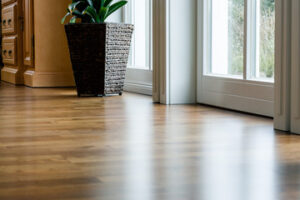Cosmetic Dentistry Las Vegas involves procedures like teeth whitening and dental bonding that enhance the look of your smile. It is different from restorative dentistry, which focuses on repairing teeth that are broken or decayed.
It is important to choose a dentist who has the training and experience to perform the cosmetic procedures you are interested in.

If you’re dissatisfied with your smile, cosmetic dentistry offers many treatment options. It’s important to choose a qualified dentist, and to be sure they have advanced training in the procedures you’re interested in. You should also ask to see before and after photos from previous patients to ensure that they’re able to provide the results you desire.
There are several ways that cosmetic dentistry can improve your smile, including teeth whitening. This is one of the most popular cosmetic treatments, and can significantly brighten your smile. This procedure can be done at home with a whitening kit from your dentist, or in the office using professional whitening techniques.
Besides teeth whitening, another way to improve your smile is to get dental bonding. This involves applying a tooth-colored composite resin material to your teeth, then shaping and hardening it with a high-intensity light. This is used to repair cracked or chipped teeth, fill in gaps between your teeth, and even change the shape of your teeth.
The cosmetic dentistry procedures mentioned above can help you achieve a healthier, more attractive smile, and increase your confidence and self-esteem. However, it’s important to remember that your health should be your primary concern, and that a healthy mouth is the foundation of a beautiful smile.
While there is no such thing as a “cosmetic dentist” in Australia, some general and specialist dentists have a strong interest in these areas. In fact, most of the work of a general dentist or oral maxillofacial surgeon will involve some element of cosmetic treatment, such as veneers, orthodontics, jaw surgery or implants.
Before you decide to undergo a cosmetic dentistry procedure, be sure that you have thoroughly researched the dentist you’re thinking about working with and have read online reviews. You should also take the time to find out more about the procedure itself, and what its benefits are. It’s also a good idea to speak to a cosmetic dentist about your concerns and ask any questions you may have. Be sure to choose a practice with extensive experience in cosmetic dentistry, and whose team is dedicated to providing their clients with the best possible outcomes.
Porcelain Veneers
Porcelain veneers can correct a wide range of aesthetic flaws. For example, they can close small gaps between teeth, lengthen teeth that have been shortened by wear, fill black triangles between teeth caused by gum recession, and provide a uniform color, shape, and symmetry to the smile. They can also cover up chips and cracks on existing teeth.
Veneers are typically made from porcelain that is bonded to the front of your existing teeth. This process is completely painless and requires no anesthesia, so you can receive them without fear of discomfort or embarrassment. Before bonding, the surface of the tooth and the veneer are both polished and then treated with an acidic gel for 20 seconds to create a bond. This ensures that the veneers will remain in place for a long period of time.
When it comes to maintenance, you should treat your veneers like you would your natural teeth. This means brushing twice daily with a nonabrasive toothpaste, flossing once per day, and using mouthwash regularly. Additionally, you should avoid chewing on ice or hard foods, as these can damage your veneers.
While both composite and porcelain veneers can produce beautiful results, porcelain has the advantage of appearing more natural. This is because it closely resembles the color and translucency of your natural teeth, which helps to create a lifelike appearance. Additionally, porcelain is a more durable material than resin, which makes it less likely to chip or break.
Because of their natural-looking appearance, porcelain veneers can make a significant difference in your self-confidence and overall quality of life. However, this treatment is not appropriate for everyone and you should consult with our cosmetic dentist to determine if it’s the right option for you.
There are some cases in which porcelain veneers will not be effective, such as if the patient grinds their teeth and causes severe deterioration of the enamel. In this case, the dentist may recommend other treatments to restore the strength of the teeth and allow them to support veneers effectively. Also, if the teeth are too worn down from grinding, it can be difficult to bond the veneers.
Dental Implants
Dental implants are a popular choice for replacing missing teeth. They look, feel and function like natural teeth, and they can help prevent jaw bone loss in the area of the missing tooth. They can also improve the appearance of a smile and may make it easier to chew and speak. Unlike dentures, dental implant crowns are permanently fixed in place and do not require adhesive or special cleaning routines.
To get a dental implant, you will first need to visit your dentist for an evaluation and consultation. During this appointment, your dentist will take x-rays and impressions of your mouth to get a full evaluation of the condition of your gums and bones. Then, your cosmetic dentist will prepare the area by drilling a hole in the jawbone where the metal implant will be placed. A small healing cap or cover screw will then be put on top of the implant to protect it while it heals.
After a few months, the implant will be ready for the next stage. Then, a post called an abutment will be attached to the implant, and finally a crown will be placed on top of the abutment. The crown will be custom-made to match your existing teeth, so it will blend in seamlessly. Typically, the crown is made of ceramic zirconia, but we can use other materials as well.
In most cases, dental implants will last for a lifetime if you maintain good oral hygiene and visit your dentist for regular check-ups. However, some factors can cause the implant to fail, including poor oral health, smoking, and drug abuse.
While there are several different types of dental implants, most cosmetic dentists offer titanium-based implants because they are extremely durable and biocompatible. This means that the implant will not corrode or interact with the surrounding bone tissue in the way that other types of implants can. If you have a metal allergy, we can also provide titanium-free implant restorations. Dental implants are a long-term solution to missing teeth and can be used to replace one tooth, multiple teeth or even an entire arch of teeth.
Dental Bonding
Cosmetic bonding uses a tooth-colored resin to repair damaged teeth. This quick and inexpensive procedure can dramatically improve the appearance of a tooth. It is ideal for repairing chipped teeth, but can also be used to close gaps or make crooked teeth look more uniform in shape. The resin covers the affected part of the tooth, concealing any damage or discoloration.
Bonding is one of the least invasive dental procedures available, since it does not require removal of any natural tooth enamel. It is also less expensive than veneers or crowns, and can often be completed in a single office visit.
To prepare for the treatment, the dentist will roughen the surface of your existing tooth with an etching gel or solution. This will allow the composite resin to adhere to the tooth better. Next, the dentist will select a shade of resin that matches your natural tooth color as closely as possible. The resin is then applied to the damaged tooth in layers, with each layer being cured or hardened with a special light before the next one is added. Once the final layer is in place, the dentist will smooth and trim the resin to give it the desired shape. Afterwards, the dentist will polish it to add a shine to your tooth and ensure that the bonding looks natural in your mouth.
Tooth bonding typically lasts three to 10 years before need of repair, but the lifespan of your restoration will depend on how much you use your teeth and how well you maintain them. Regular brushing and flossing, along with avoidance of bad habits like nail-biting or teeth clenching, will help extend the life of your cosmetic bonding.
You may experience sensitivity after getting your teeth bonded, especially if the dentist removed some enamel during preparation. However, this discomfort is generally temporary and can be managed with over-the-counter painkillers. It is also important to avoid foods and beverages that stain your teeth, such as coffee or tea, for a few days after getting bonding. This will help prevent your new composite from absorbing stains as quickly.






